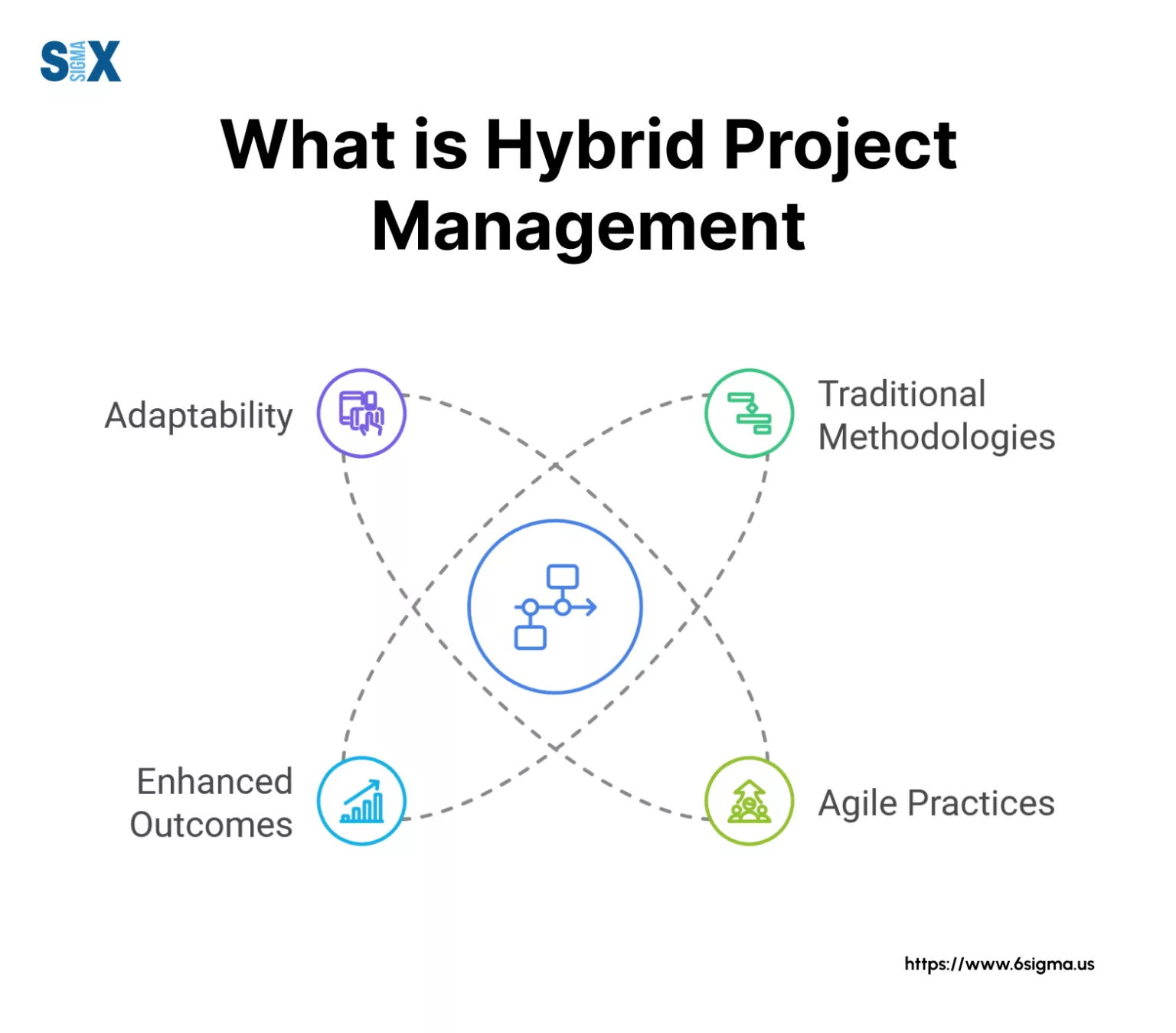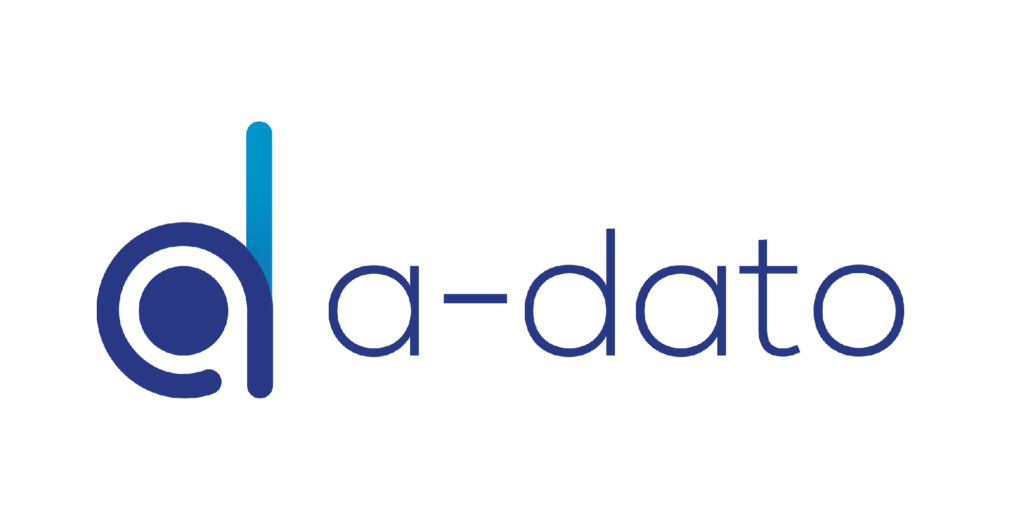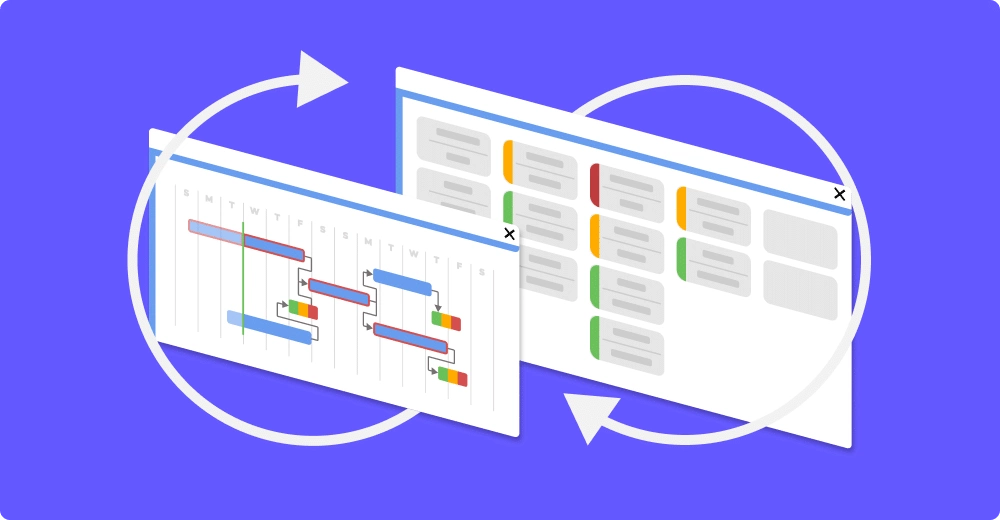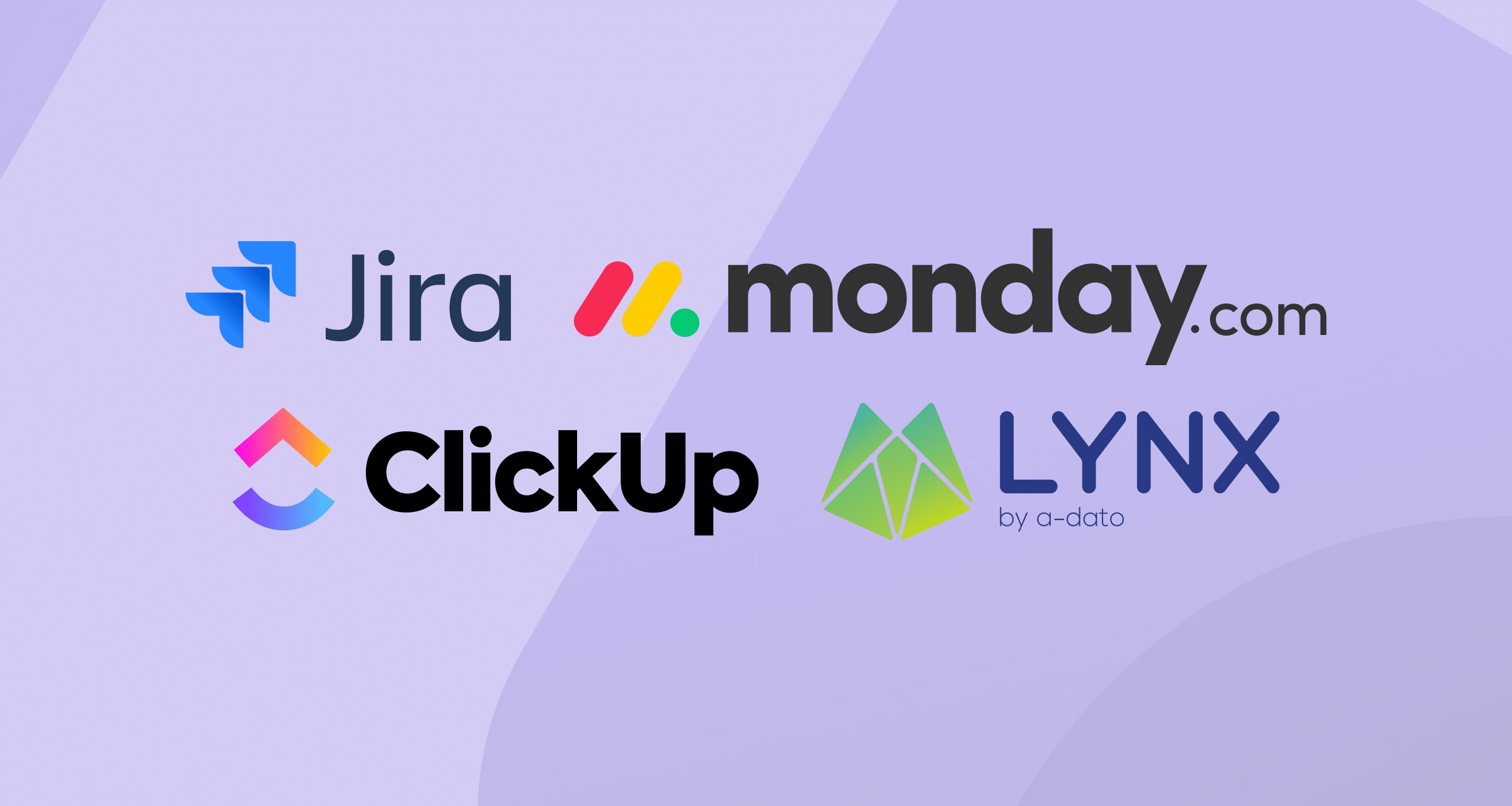Hybrid project management is a project approach that blends traditional and agile techniques into one flexible methodology. In hybrid models, teams combine the structured planning of classic Waterfall methods with the adaptability of Agile practices to create a process tailored to their project’s needs. This comprehensive guide explains hybrid project management, which frameworks it combines (like Scrum, Kanban, and Lean), why organizations adopt it, the benefits and challenges of hybrid approaches, how to implement hybrid project management effectively, real-world examples, and best practices for success. By the end, you’ll understand how a hybrid methodology offers the “best of both worlds” from agile and traditional project management to drive better project outcomes.
Definition and Overview of Hybrid Project Management
Hybrid project management – also known as a blended approach – refers to the practice of merging elements from multiple project management methodologies (typically agile and waterfall) into a singular, customized framework. Instead of following one rigid method, hybrid teams select the best practices from each approach to suit the project at hand. For example, a team might use waterfall’s up-front planning and requirements definition, then execute development in agile sprints.
According to the ProjectManager industry guide, the simple definition of hybrid project management is “a combination of two different methodologies or systems, such as waterfall and agile, to create a new and better project management model”.
In essence, hybrid approaches acknowledge that one size does not fit all – different projects benefit from various techniques, so merging methods can improve efficiency and outcomes.
Hybrid project management conceptually overlaps traditional methodologies with agile practices to achieve adaptability and enhanced outcomes. In the illustration above, the hybrid approach is depicted as an intersection of structured Waterfall processes (green) and flexible Agile practices (purple), emphasizing how it maintains adaptability while delivering enhanced outcomes by leveraging both approaches.

Unlike a pure methodology, a hybrid approach has no strict rulebook – it’s a fit-for-purpose strategy tailored to each project’s context. This adaptability is a key reason for its rising popularity. In fact, global research by the Project Management Institute found hybrid methods are on the rise, with adoption increasing over 57% in recent years. Organizations have learned that by combining frameworks, they can better handle today’s complex projects and volatile requirements. Hybrid project management allows maintaining necessary structure and predictability from traditional techniques while embracing flexibility and customer-centric iteration from agile methods. The result is a framework that’s both robust and flexible, giving teams a way to “combine the best of both worlds – Waterfall’s structured planning with Agile’s adaptability”.
Key Methodologies Combined in Hybrid Approaches
Hybrid project management typically merges predictive (plan-driven) and adaptive (change-driven) methodologies. The exact combination can vary, but most hybrid approaches draw from these key frameworks and methodologies:
-
Waterfall – The classic sequential project management method known for its structured phases (requirements, design, implementation, testing, etc.) where each stage is completed before moving to the next. Waterfall provides a linear plan, clear documentation, and defined milestones. It excels when requirements are well-known and change is minimal, ensuring predictable schedules and thorough upfront planning. In a hybrid model, waterfall elements might be used for high-level planning, scope definition, or phases that require a fixed sequence (e.g. regulatory compliance or hardware development).
-
Agile – An iterative, incremental approach that emphasizes flexibility, customer feedback, and continuous improvement. Agile teams work in short cycles (e.g. sprints), frequently reprioritize tasks, and adapt to change readily. Agile isn’t a single methodology but a family of practices guided by the Agile Manifesto values (individuals and interactions, working product, customer collaboration, responding to change). Common agile frameworks include Scrum and Kanban. In hybrid projects, agile techniques are often applied to portions of the project where requirements are evolving or quick iterations add value, such as software development or exploratory design, while other parts might remain on a fixed plan.
-
Scrum – A popular Agile framework that structures work into fixed-length sprints (typically 1–4 weeks) and defines specific team roles (Scrum Master, Product Owner, Development Team). Scrum focuses on delivering shippable increments each sprint, with ceremonies like daily stand-ups, sprint reviews, and retrospectives to enforce transparency and continuous improvement. In a hybrid environment, teams might use Scrum for iterative development cycles within a larger waterfall roadmap. For example, after a detailed waterfall planning phase, the execution or development could be managed using Scrum sprints.
-
Kanban – An Agile method centered on visualizing work and limiting work-in-progress via a Kanban board. Tasks move through columns (Backlog, In Progress, Done, etc.), allowing continuous flow instead of time-boxed sprints. Kanban is great for teams that need constant throughput and flexibility without fixed iterations. Hybrid approaches may incorporate Kanban boards to track tasks and workflows even if the project overall has milestone deadlines. This gives a real-time view of progress and helps manage workloads while still adhering to a high-level plan.
-
Lean – A philosophy derived from Lean manufacturing (Toyota Production System) that focuses on maximizing value while minimizing waste. Lean project management encourages eliminating non-value-added activities, continuous learning, and efficiency. In hybrid methodologies, Lean principles might be applied to streamline processes and decision-making. For instance, teams may adopt Lean techniques to remove bottlenecks or unnecessary documentation, ensuring the hybrid process remains efficient. Lean’s emphasis on value and flow complements Agile’s iterative delivery and can be blended with stage-gate controls from Waterfall.
-
Other Frameworks – Depending on the project, hybrid models can include aspects of PMI’s PMBOK/PMP guidelines, PRINCE2 (a structured project management method), or specific Agile variants like Extreme Programming (XP) for software engineering. The idea is to cherry-pick practices that fit. For example, a team might follow PRINCE2 or PMBOK processes for governance and risk management, while using Agile techniques for execution. DevOps practices could also be integrated in IT projects (combining software development and IT operations for continuous delivery). The hybrid approach is inherently customizable – it’s about finding the right balance of tools and techniques from various schools of thought to suit project objectives.
In summary, a hybrid project management approach often pairs a structured methodology (like Waterfall or PRINCE2) with adaptive methods (like Scrum, Kanban, or other Agile frameworks). As the Lucidchart blog explains, you might “cherry-pick Agile components and apply them to a Waterfall methodology,” such as using Scrum to manage development sprints, Lean to drive continuous improvement, or Kanban boards to visualize workflow within a traditionally planned project. The combination is tailored: for instance, do detailed up-front planning and requirements documentation (Waterfall), then execute with frequent check-ins and iterative builds (Agile). This flexibility in mixing methods is the hallmark of hybrid project management.
Benefits of Hybrid Project Management
Organizations adopt hybrid project management because it offers a range of advantages by leveraging the strengths of each methodology. Key benefits include:
-
Flexibility and Adaptability: Hybrid approaches give teams flexibility to respond to change without sacrificing all structure. Agile techniques embedded in the process mean teams can adapt to evolving requirements or stakeholder feedback mid-project. This is especially valuable in fast-paced industries or innovation projects. If priorities shift or issues arise, the project can pivot more easily than under a rigid waterfall plan. At the same time, having a baseline plan and clear objectives (from the traditional side) ensures the project stays aligned with business goals. This balanced adaptability is often cited as the top benefit of hybrid project management.
-
“Best of Both Worlds” Efficiency: By combining methods, hybrid projects can achieve higher efficiency and quality than a single-method approach. Teams retain waterfall’s holistic, big-picture planning (reducing risk of missing major scope elements) while also using agile’s incremental delivery to get early results and feedback. This synergy can improve overall project performance. A PMI study found that when done right, hybrid methods deliver performance and results as good as purely predictive or purely agile methods. The approach lets you pick what works best for the project from each methodology– for example, using proven traditional techniques where appropriate and innovating with agile where it adds value. This tailored efficiency often leads to shorter delivery times and higher quality, as the team can optimize the process for the task at hand.
-
Improved Risk Management: Hybrid project management can mitigate risks more effectively by using a dual approach. Waterfall’s thorough upfront planning and analysis help identify risks early (before development starts), while Agile’s iterative cycles allow for continuous risk monitoring and rapid issue resolution during execution. This combination means fewer surprises – potential problems are caught either in the initial planning or during frequent agile check-ins. As one consultant noted, blending waterfall planning with agile iteration enabled their organization to “identify and mitigate risks more effectively,” catching issues early and avoiding costly rework. The hybrid model thus balances risk: plan for known risks and adaptability for unforeseen ones.
-
Higher Stakeholder Engagement and Satisfaction: Because hybrid projects produce deliverables incrementally (as in Agile), stakeholders don’t have to wait till the very end to see results. They can be engaged through demos, prototypes, or phase-gate reviews throughout the lifecycle. This continuous stakeholder involvement leads to higher satisfaction. Stakeholders get the transparency and regular feedback loops of agile (e.g. sprint reviews, iterative releases) combined with the confidence of a master plan and set milestones from waterfall. The clear schedule of deliverables keeps stakeholders informed, while the agile components ensure their feedback is incorporated. This balanced approach resulted in a 40% increase in stakeholder satisfaction in one reported case. Simply put, hybrid methods keep stakeholders both comfortable (there’s a plan) and happy (they see progress and have input).
-
Balanced Structure with Agility: A hybrid framework maintains the structured discipline needed for certain aspects (budget tracking, compliance, scope control) alongside agile agility for innovation and fast adjustments. Teams can enjoy autonomy in execution (self-organizing, experimenting, iterating) within a broader controlled environment (with defined timelines, deliverables, and oversight). This balance can lead to better team performance: people have room to innovate but also clear expectations and boundaries. It’s especially helpful for organizations transitioning from traditional to agile – hybrid serves as a stepping stone that provides agility without abandoning all familiar structure. As Simplilearn notes, it creates a “balance between control and agility, allowing effective project management in dynamic environments”.
-
Smoother Transition & Broader Applicability: Hybrid methods ease the transition for teams moving from purely traditional to agile. Not every organization can jump straight into Scrum or Kanban for all projects – there may be corporate requirements, documentation standards, or culture barriers. A hybrid approach lets teams gradually adopt agile practices while keeping some conventional processes, making change less intimidating and more sustainable. It’s an opportunity for learning – teams build agile skills over time without losing productivity. Moreover, hybrid project management is very versatile: it can be applied to a wide range of projects and industries. Whether it’s software development, product manufacturing, marketing campaigns, or construction, a hybrid model can be tailored to fit. This broad applicability means organizations can standardize on a hybrid framework and tweak it per project, rather than inventing a new process each time. The PMI’s Pulse of the Profession research indicates that many organizations find hybrids beneficial across diverse project types, contributing to the surge in hybrid adoption.
Thanks to these benefits, hybrid project management has become an attractive approach for companies striving to innovate without losing control. It allows projects to be more resilient in the face of change and complexity. As one expert put it, hybrid methods let organizations “maintain the structure needed for governance and compliance while gaining the agility required in today’s fast-paced environment”.
In practice, this means a project can satisfy executives’ need for predictability and documentation and the end-users’ need for rapid, responsive development. When executed well, a hybrid approach can lead to faster delivery, higher quality outcomes, and a project environment that is both disciplined and agile.
Challenges of Hybrid Project Management
While hybrid project management brings many benefits, it also introduces new challenges. Blending different methodologies is inherently more complex than following one clear path. Teams must be prepared to address the following potential drawbacks and difficulties:
-
Increased Complexity: Combining agile and waterfall (and possibly other methods) means you’re essentially running two systems in parallel, which can be complicated. There is a risk of confusion or process clashes if the hybrid framework isn’t well-defined. For example, coordinating sequential waterfall phases with overlapping agile sprints requires careful scheduling and clarity on how the two interact. If not properly structured, the project can “create confusion” or inefficiencies. Managing deliverables, requirements, and timelines across different methodologies demands extra effort in planning and monitoring. Hybrid projects often need clear delineation of which parts follow which approach; without that, teams may be unsure how to proceed at any given time.
-
Balancing Conflicting Mindsets: Agile and traditional approaches come with very different philosophies (e.g. “responding to change” vs. “following a plan”). This can lead to cultural resistance and mindset conflicts on the team. Long-time practitioners of waterfall may resist agile practices, and vice versa. In fact, one of the most immediate challenges is often resistance to change – team members deeply ingrained in a traditional mindset might view agile elements as chaotic or incompatible. Likewise, agile enthusiasts might chafe at any added documentation or bureaucracy from the traditional side. Striking a balance between these mindsets is tricky; the team needs to understand the value of both. Overcoming this challenge requires strong change management and leadership support to get everyone on board with the new hybrid process.
-
Coordination and Communication Issues: Hybrid teams can suffer from communication gaps if some members follow one methodology’s practices and others follow another. Different “methodological languages” might be in play– for instance, agile teams talk in terms of user stories, sprints, and velocity, while traditional stakeholders think in terms of requirements docs, Gantt charts, and milestones. Without deliberate effort, this can cause misunderstandings. Additionally, coordinating meetings and reporting is harder: an agile team might not produce the kinds of status reports a waterfall-minded executive expects. Effective communication is paramount to keep everyone aligned. All stakeholders must be educated on the hybrid process so they know what to expect. Establishing common terminology and standardized reporting templates that cover both sprint metrics and milestone progress is one recommended solution. Failing to do so can leave gaps where things fall through the cracks or some team members feel out of the loop.
-
Process and Tool Integration: A hybrid approach may involve using a mix of tools and techniques from different methodologies, which can be challenging to integrate. For example, teams might use agile boards or sprint backlogs alongside Gantt charts and requirement documents. Ensuring that these tools sync up and that everyone can access the information they need isn’t always straightforward. Many project management software tools are specialized for either agile or waterfall, but not both. If your toolset isn’t aligned to hybrid work, the team could end up duplicating data in multiple systems or missing a comprehensive view of the project. It’s a challenge to find the right hybrid project management software or to configure existing tools to support a combined approach. Without careful planning, teams might struggle with version control of documents, tracking of dependencies across agile and non-agile parts, or generating unified reports.
-
Scope Creep vs. Rigidity: In a hybrid environment, there’s a delicate tension between allowing change and preventing scope creep. Agile components encourage embracing change, but if not controlled, changes can spiral and affect the parts of the project that needed stability. On the other hand, sticking too rigidly to the plan can negate the benefits of agility. This balancing act is a challenge in itself – deciding where to be flexible and where to hold the line. For instance, teams must decide which requirements are fixed (won’t change) and which can evolve as the project progresses. If this balance is off, the project might either become too rigid (losing agility and failing to capitalize on iterative learning) or too fluid (jeopardizing deadlines and budgets set during planning). Finding the right mix of control and adaptability is an ongoing challenge throughout the project.
-
Team Skill and Adaptability: A successful hybrid project demands team members (and managers) who are knowledgeable in both traditional and agile practices. Lack of expertise in either domain can hurt the project. For example, if a team is new to Agile, they may struggle with ceremonies like daily stand-ups or backlog grooming, reducing the effectiveness of those practices. Conversely, if they lack understanding of critical path or risk registers from the traditional side, they might under-plan the project. There’s also the challenge of role definition – in a hybrid team, you might have roles like a Scrum Master and a Project Manager co-existing. Without clarity, there could be overlap or conflict in responsibilities. Teams need to be adaptable and willing to learn new approaches, which comes with a learning curve. Ensuring everyone is trained and comfortable with the hybrid process is difficult but necessary; otherwise, parts of the project may be executed poorly due to unfamiliarity.
-
Management and Oversight: From a management perspective, hybrid projects can be harder to oversee. KPIs and success metrics might not be uniform across the project since different parts use different criteria (e.g., agile teams measure velocity and customer satisfaction, while traditional parts measure on-time, on-budget delivery). This can make it challenging for project managers and PMOs (Project Management Offices) to gauge overall project health at a glance. Governance is also more complex – deciding what documentation is required, how change control is handled (agile changes vs. formal change requests), and how to conduct phase-gate reviews for a hybrid project requires new policies. Managers must be careful not to overload the team with the sum of all controls (agile + waterfall) to “cover all bases,” as that could create process overhead that slows the team down. Instead, a tailored governance approach is needed, which can be tough to get right.
Despite these challenges, they are not insurmountable. Awareness and proactive management are key. Many organizations have addressed these issues by investing in training, adopting robust communication plans, and setting clear hybrid processes. For example, gradual implementation and pilot projects can help overcome resistance by demonstrating tangible benefits of the hybrid approach. Clear delineation of phases (which parts of the project will use waterfall vs. agile) can resolve planning complexity. To avoid miscommunication, successful hybrid teams establish unified communication protocols and combined dashboards so everyone sees the same information. In short, while a hybrid model introduces complexity, with the right strategies and tools (and a bit of patience during the learning curve), teams can mitigate these drawbacks and enjoy the benefits of a well-blended methodology.
Implementation Strategies: How to Introduce Hybrid Project Management
Successfully implementing a hybrid project management model requires thoughtful planning and a structured approach. Here are effective strategies and steps to put a hybrid methodology into practice, including tools, frameworks, and best practices:
1. Assess Project Requirements and Team Capabilities: Start by analyzing your project and organization to determine if a hybrid approach makes sense. Not every project needs a hybrid model – you should have clear reasons for blending methods. Evaluate factors like project complexity, requirements volatility, stakeholder expectations, regulatory constraints, and team experience. For example, if parts of the project have fixed deadlines or compliance needs (favoring Waterfall) and other parts involve innovative development or uncertain requirements (benefiting Agile), that’s a strong case for a hybrid approach. Also assess your team’s familiarity with Agile and traditional methods. If the team has zero agile experience, you might need to budget time for training or start with a smaller pilot project. Understanding the project’s nature and the team’s readiness will guide how you design the hybrid process.
2. Choose Elements from Different Methodologies: Once you decide to go hybrid, the next step is selecting which aspects of each methodology to combine. This is the crux of hybrid planning – effectively designing your custom method. Identify which project phases or components will follow a plan-driven (waterfall) approach and which will use an adaptive (agile) approach. One useful tactic is to map out the project lifecycle and label each segment as either sequential or iterative. For instance, you might choose Waterfall for initial requirements gathering, high-level design, and final deployment, but use Agile sprints for development and testing. Look at dependencies: some parts may need the output of earlier phases (waterfall), whereas others can proceed independently in iterations. Also, cherry-pick specific practices: perhaps use Scrum for development, Kanban for support tasks, and Waterfall for integration and release management. Make these decisions based on what will mitigate risks and add value. Document the chosen methodology mix clearly – e.g. “We will hold a traditional kick-off and planning phase, then run 2-week Scrum sprints for execution, and finally revert to a waterfall-style deployment and closure.” This clarity ensures everyone understands how the project will be managed.
3. Create a Customized Hybrid Framework: With the methodology elements chosen, formalize them into a hybrid project management framework or plan. This framework should define how the project will operate day-to-day. Key things to establish include: project roles and governance, planning cadence, how requirements are documented and updated, how progress is tracked, and how changes are handled. For example, you might create a governance structure that has both sprint reviews (for agile work) and phase-gate reviews (for waterfall milestones) built into the schedule. Define communication protocols such as what meetings will take place (maybe daily stand-ups and weekly status meetings) and what reports will be produced (perhaps a sprint burn-down chart plus a milestone progress report). The framework should also specify tools to be used and how they integrate. Essentially, this step is about writing down “how we do hybrid here” – it could be in the form of a project management plan or a methodology guide for the team. By having a well-defined hybrid process, you reduce ambiguity. Keep it tailored: only include governance and documents that are truly needed to blend structure with agility (avoid unnecessarily burdening the team with both full agile and full waterfall documentation – strike a balance). A good hybrid framework will preserve needed rigor (e.g. design sign-offs, risk assessments) while enabling frequent delivery and feedback loops.
4. Secure Stakeholder Buy-In and Communication: Before diving into execution, it’s crucial to get buy-in from all stakeholders – including the team, management, and clients. Hybrid may be new to some stakeholders, so take time to educate and align everyone on the new process. Explain how the hybrid approach will work and why it’s being used (emphasize benefits like faster delivery or better risk control). Set expectations that some processes will differ from what people are used to. For example, stakeholders might be used to detailed Gantt charts; you may need to show them how an agile board works and assure them that progress will still be visible, just in a different format. Conversely, if stakeholders expect extreme agility, clarify which aspects will remain fixed. Providing a “process roadmap” or visual of the hybrid workflow can be helpful. Share documentation on roles and responsibilities in this hybrid model so everyone knows their part. Once the plan is confirmed, maintain open communication: keep stakeholders in the loop with regular updates that reflect both the iterative progress and status against the overall plan. By bringing everyone along from the start, you mitigate confusion later and ensure support for the hybrid method.
5. Use Hybrid-Friendly Tools: Leverage project management tools and technology that support both waterfall and agile workflows. The ideal scenario is a unified tool or integrated set of tools where you can manage Gantt charts, task lists, and agile boards all in one place. Modern project management software (like Jira Align, Azure DevOps, Wrike, Trello with plugins, or hybrid-focused tools like ZenHub, etc.) often provide multiple views of the same data – for instance, a project plan can be viewed as a timeline (Gantt) or as a Kanban board depending on preference. If your current toolset is siloed (say, you use Microsoft Project for scheduling and a separate tool for agile), explore integrations or consider migrating to a platform that accommodates hybrid project management. It’s important that all team members can access a single source of truth for project information, whether they want to see a high-level roadmap or detailed user stories. Also, ensure your tool can handle things like linking user stories to overarching requirements or linking sprint tasks to milestone deliverables. Templates can help too – you might create a hybrid project template that pre-populates a traditional Work Breakdown Structure alongside an Agile backlog. By using the right tools, you simplify execution: team members follow their tasks in the format they prefer, and managers can still see the big picture, with everything kept in sync.
6. Execute in Iterations with Oversight: During project execution, follow the hybrid plan but remain adaptable. Run the agile parts in their cycles (sprints or Kanban flow) and waterfall parts as scheduled phases, but ensure they continuously inform each other. For example, insights from a sprint review might trigger an update to the overall project plan or requirements document. Maintain discipline in each domain: don’t abandon agile principles during sprints (e.g., keep doing daily stand-ups, retrospectives, etc.), and likewise uphold waterfall practices for the planned components (e.g., conduct phase reviews, track against baselines). It’s easy for one side to get neglected – avoid that by maybe having both a Scrum Master (to champion the agile process) and a Project Manager (to oversee the plan) working together. This dual oversight can help keep the hybrid engine running smoothly. Continually monitor key metrics from both approaches (velocity, burndown, issues from agile; plus earned value, milestone slippage from waterfall) to get a full picture of progress. If your tool is properly set, you should be able to generate hybrid status reports combining these. Also, manage team workload carefully – sometimes agile teams self-organize their tasks which might conflict with a manager’s pre-set priorities; coordination between the plan and execution teams is crucial to avoid overallocation or idle gaps.
7. Regularly Review and Adapt the Process: Implementing hybrid project management is not a “set and forget” exercise. It requires continuous improvement of the process itself. Schedule regular retrospectives or process checkpoints where the team can discuss what’s working in the hybrid approach and what isn’t. These could coincide with sprint retrospectives or be separate workshops at major phase gates. Solicit feedback: Are stakeholders getting the info they need? Is the team comfortable with the toolset? Are any agile practices or waterfall requirements causing friction? Use this input to fine-tune your methodology. Perhaps you’ll discover that the team is spending too much time on documentation – you might streamline that. Or maybe communication between sub-teams is lacking – you could introduce a weekly cross-team sync meeting. Treat the hybrid process itself as an evolving project. Embrace change in the process just as you would in product scope: if a certain hybrid practice isn’t adding value, adjust it. As TeamGantt advises, “establish checkpoints for you and your team to assess your new process… talk about what’s going well—and what’s not—so you can iron out the kinks”. Over time, these iterative improvements will mold an increasingly effective hybrid approach tailored to your organization.
8. Provide Training and Mentoring: To implement hybrid methods smoothly, invest in building the necessary skills. Offer training sessions on Agile fundamentals to team members coming from a traditional background (and vice versa, train Agile folks on critical path planning or risk management as needed). You may consider certifying some team members in hybrid-focused certifications (for example, PMI’s Agile Hybrid Project Pro micro-credential). Additionally, having a coach or mentor experienced in hybrid projects can accelerate learning. In early hybrid projects, it helps to have someone who can guide the team through ceremonies and artifacts of both methodologies, ensuring neither is ignored. Encourage a culture of knowledge sharing – perhaps pair up team members from different backgrounds so they can learn from each other (e.g., a seasoned PMP with a Scrum Master). Hybrid project management is still an emerging area, so learning from others’ experiences (through case studies, communities of practice, or consultants) can provide insights that save you from common pitfalls. The more cross-functional and cross-methodology knowledge your team has, the more confidently they can execute a hybrid project.
By following these implementation steps, you set a strong foundation for your hybrid project. To illustrate, imagine we have a software project with a fixed end-date and some non-negotiable regulatory requirements, but also a need to incorporate changing user feedback. We would assess that scenario and decide on a hybrid model. We might plan the project timeline and major deliverables (Waterfall for compliance and deadline), choose to execute development in Scrum sprints (Agile for development work), create a combined schedule that shows both sprint iterations and milestone dates, ensure the client and team understand this hybrid plan, use a tool like Jira + MS Project integration, and then start execution. During execution, we hold bi-weekly sprint reviews and also monthly stakeholder meetings against the high-level plan. We keep adjusting the process if, say, we find the documentation overhead is too high or the sprints need to be shorter. In doing so, we gradually embed hybrid project management into the organization’s way of working.
Real-World Examples of Hybrid Project Management
Many organizations across industries have successfully adopted hybrid project management to address their unique project needs. Below are a few real-world examples and case studies illustrating how hybrid methodologies are put into practice:
-
Software/Hardware Development (Telecom Industry): A major telecommunications company found that pure agile or pure waterfall alone couldn’t meet all their needs. In one project, they were developing a system that involved both hardware (infrastructure equipment) and software (control software). The hardware portion required a sequential, stage-gated approach (for manufacturing and safety testing) while the software needed an agile process to iteratively build features. This gap led to a hybrid approach – they combined Waterfall’s hardware development structure with Agile’s flexible software sprints. Essentially, the teams ran in parallel: the hardware team followed a waterfall plan for design and production, and the software team worked in Scrum cycles, with integration points defined where the two would come together. This hybrid model allowed the telecom project to encourage collaboration between traditionally siloed teams and deliver a cohesive product. It’s a great example of using hybrid management when a product has both a physical component (better served by waterfall) and a digital component (better served by agile).
-
IBM – “Agile with Discipline”: IBM has openly discussed a hybrid approach they coined “Agile with Discipline”, which integrates elements of traditional governance into Agile projects. In a case study at IBM’s Center of Excellence, project managers combined waterfall components (like strict phase definitions and documentation) within an Agile framework. The idea was to retain IBM’s rigorous processes (necessary for large enterprise projects) while reaping the benefits of Agile development. This approach emerged because IBM managers observed that pure Agile lacked some oversight for complex projects, so they consolidated waterfall controls into the Agile process. Concretely, they might run sprints and stand-ups, but still have a formalized scope sign-off, change control board, or end-of-phase review built in. The result was a custom hybrid methodology that fit IBM’s culture and client expectations. This example shows that even very large, traditionally managed companies can embrace hybrid models to innovate faster while still mitigating risk with structured practices.
-
Automotive Product Development: Automakers are increasingly using hybrid project management as cars become “computers on wheels.” For instance, consider an automotive company integrating new software features into a car model. The mechanical and hardware design of the car (chassis, engine, etc.) might follow a traditional waterfall model – long lead times, fixed designs, regulatory checkpoints (crash tests, compliance). However, the software and user interface in the car (infotainment system, driver assistance software) need agility – those teams might work in agile sprints to update software features and perform user testing. To coordinate these, auto companies use a hybrid approach: the overall vehicle program has stage gates (prototype, beta, production) aligned with manufacturing, but the software sub-projects within each stage run in iterative cycles. One scenario described in PMI’s research is an automaker aligning auto parts design (a more plan-driven process) with software development techniques (more adaptive) by shifting to hybrid methods. This ensures digital product elements keep pace with hardware development. Companies like Ford and Toyota have reportedly blended Agile (often borrowed from IT divisions) with their established engineering processes to accelerate development and improve innovation in vehicle projects. The hybrid model in automotive marries the reliability and safety focus of traditional engineering with the rapid innovation cycles of tech, which is crucial as vehicles become more software-centric.
-
Pharmaceutical R&D and Marketing: The pharmaceutical industry provides another example. Pharma projects (like drug development) are highly regulated and traditionally very waterfall (with defined clinical trial phases, approval gates, etc.). However, pharma companies also need agility in certain areas – for example, internal IT projects, or even certain research activities where iteration and hypothesis testing occur. One case is a pharmaceutical company looking to expedite specific innovation projects: they might apply Agile techniques in early research or pilot studies to iterate quickly, but then integrate those results into the broader waterfall pipeline of full clinical trials and regulatory submission. Additionally, when launching a new drug, the marketing campaign could use Agile (adjust messaging based on feedback), whereas manufacturing scale-up follows a strict plan. A hybrid approach in such organizations allows faster innovation without compromising compliance. According to PMI, pharma companies are using hybrid methods to ensure growth opportunities in changing markets while still managing risk in their portfolios.
-
Financial Services (Digital Transformation): A finance company implementing a large-scale digital transformation faced the challenge of yearly budgeting cycles and regulatory oversight (which fit a traditional model) versus the need to deliver new digital products and updates continuously (which calls for Agile). The solution was a hybrid governance model: at the enterprise level they maintained annual planning, funding approvals, and high-level roadmaps (waterfall-like), but at the project execution level they empowered product teams to work in agile sprints and deploy frequently to market. This is sometimes called a “bimodal” or hybrid approach to portfolio management. It allowed the company to balance its value-stream agile initiatives with the big-budget projects that needed predictable control. Essentially, each project used hybrid management – for example, an online banking app project had fixed quarterly deliverables (like milestones) but the development within each quarter was agile. Many banks and financial institutions operate in this hybrid manner, mixing Scrum teams with oversight committees, to meet both innovation goals and regulatory demands.
These examples demonstrate that hybrid project management is not just a theoretical idea, but a practical solution implemented by companies in tech, manufacturing, pharmaceuticals, finance, and beyond. In each case, the organization identified a need for combining approaches to solve a problem – whether it was integrating hardware and software development, accelerating time-to-market in a regulated environment, or balancing strategic planning with agile delivery. Moreover, surveys show that adoption of hybrid approaches has grown significantly across industries. As of 2023, a substantial percentage of organizations (over 30%, up from 20% a few years prior) use hybrid project management regularly, indicating that these real-world examples are part of a broader trend.
If you’re considering hybrid project management, it can be helpful to look for case studies in your specific industry. Chances are, another company has tackled a similar challenge by tailoring a hybrid approach. Learning from their experiences – what combination they chose, what hurdles they faced – can provide insight for your own implementation. The takeaway is clear: hybrid methodologies are helping real teams deliver complex projects successfully, from developing cutting-edge products to transforming legacy processes.
Best Practices for Successful Hybrid Project Management
To optimize hybrid project management for success, organizations should follow best practices that address both its agile and traditional components. Below are several best practice tips to help ensure your hybrid projects run smoothly and achieve their intended benefits:
-
Develop a Change Management Strategy: Implementing a hybrid approach often requires a cultural shift. Anticipate resistance and manage it proactively. Communicate the “why” behind the change to all team members and stakeholders. Provide forums for people to voice concerns and get answers. Gradually introduce hybrid practices (you might pilot a hybrid project first as a proof of concept). By treating the adoption of hybrid methodology as a change initiative in itself – with sponsorship, training, and feedback loops – you increase buy-in and reduce pushback. Highlight early wins from the hybrid approach to build momentum and demonstrate its value.
-
Establish Clear Governance and Roles: Define how decision-making and oversight will work in the hybrid model. It’s crucial that everyone knows who is responsible for what and how the project will be controlled. Best practices include creating a governance structure that might combine elements like a traditional steering committee along with agile product owner leadership. Clarify roles such as Project Manager, Scrum Master, Product Owner, Team Leads, etc., and how they collaborate. For example, decide upfront how scope changes will be approved (maybe minor changes go through the Product Owner in agile fashion, but major changes require a change request to the PM). Set thresholds for when to use each method’s control mechanism. Having this governance mapped out prevents chaos and ensures the project remains aligned with organizational expectations. Also, document the boundaries: e.g., “The development team can swap tasks within a sprint without higher approval (agile autonomy), but any change that affects the overall timeline or budget must go through formal approval (traditional control).” Such clarity in governance will keep the hybrid project disciplined.
-
Unify Communication and Reporting: Communication is the glue that holds a hybrid project together. To avoid agile/traditional silos, implement a communication plan that bridges methodology gaps. Use common project terminology and educate the team and stakeholders on any new terms. It’s often helpful to maintain a single project dashboard or status report that includes both agile metrics and waterfall metrics. For instance, an executive status report might list milestone completion percentages alongside velocity or burndown charts for sprints. Standardize this reporting so stakeholders become comfortable with the hybrid view. Additionally, hold regular joint meetings: perhaps a monthly stakeholder update that reviews overall progress (waterfall view) and demonstrates recent work increments (agile view). Ensure that important information is accessible to all – if some details live in a Jira backlog and others in an MS Project file, make sure there’s transparency or consolidation. By keeping communication lines open and consistent, you prevent misalignment. Encourage team members to over-communicate initially to make sure nothing slips through due to assumptions from either methodology. When in doubt, err on the side of clarity – for example, document decisions made during stand-ups into the project log so that the wider team sees them. Effective communication planning will greatly reduce confusion in a hybrid project environment.
-
Balance Flexibility with Control: Since hybrid is all about balance, continually enforce a mindset of balanced trade-offs. Avoid the extremes – neither micromanage the agile portion with too much bureaucracy nor let the structured portion become too loose. One best practice is to explicitly delineate which areas are flexible and which are fixed. For example, you might decide that the scope of features is somewhat flexible (can be adjusted as you learn), but the final delivery date is fixed (must be met). Or that the team can use agile methods internally, but must produce certain documents for compliance no matter what. Communicate these non-negotiables and negotiables clearly. During execution, monitor if the project is veering too far in one direction: e.g., if change requests are becoming too frequent and jeopardizing the timeline, tighten up change control; if progress is too slow due to over-planning, allow more agility. A good hybrid project manager acts like a pendulum governor, making minor adjustments to keep the project from swinging too far off course. Tools can assist here as well – for instance, setting work-in-progress limits (from Kanban) can prevent taking on too many changes at once, whereas baseline variance alerts (from PM software) can warn if the plan is getting out of sync. Regular review meetings (retrospectives, steering committee reviews) can include a quick check: “Are we maintaining the right balance between agility and adherence to plan?” By consciously managing this balance, you’ll leverage the benefits of both approaches without letting either side undermine the project.
-
Ensure Team Training and Cross-Functional Skill Building: A hybrid team should be well-versed in both agile and traditional practices. Invest in training programs, workshops, or coaching to bolster any weak areas. For example, train traditional project managers in Scrum principles or agile team members in risk management and project scheduling techniques. When team members understand the rationale behind both methodologies, they’re more likely to respect the hybrid approach and execute it properly. Encourage mentorship within the team: pair an agile-experienced member with a waterfall-experienced member for certain tasks so they can learn from each other. Promote a team culture of learning and flexibility – after all, hybrid requires people to wear multiple hats at times. You might also rotate roles or have people attend each other’s meetings (e.g., a developer sits in on schedule planning, a project manager attends daily scrums occasionally) to build empathy for each other’s processes. Another best practice is to document and share methodology guides or cheat-sheets – for instance, a quick reference on “Agile ceremonies and what they accomplish” for those new to agile, and a guide on “Key project planning concepts” for those new to waterfall. This knowledge sharing ensures the team has a common understanding. Ultimately, the more hybrid-savvy your team is, the more smoothly your projects will run.
-
Leverage Integrated Tools and Frameworks: Use tools that facilitate a hybrid workflow and make sure the team is trained to use them effectively. As mentioned in implementation, having one platform to track everything can be a game-changer. Beyond just selecting tools, establish best practices in using them: for instance, linking user stories to higher-level requirements or portfolio items so that one can trace agile work to the waterfall scope. Take advantage of any frameworks or templates from industry standards – PMI’s Disciplined Agile toolkit, for example, provides guidance on tailoring approaches (it offers a “choose your WoW – Way of Working” approach which is essentially helping you build hybrid methods). Another framework, SAFe (Scaled Agile Framework), incorporates some level of hierarchical planning that can blend with traditional portfolio management for larger enterprises. While you don’t have to formally adopt SAFe or Disciplined Agile, studying these can give insight into structure. Standardize your hybrid approach to some extent so that all projects in your organization aren’t reinventing the wheel – for instance, create an internal playbook: “Our Hybrid Project Methodology,” which might outline which tool to use for what, how to conduct hybrid meetings, etc. This ensures consistency and helps teams new to hybrid hit the ground faster.
-
Start Small and Scale Up: If your organization is new to hybrid, it’s wise to start with a pilot project or a small-scale implementation. Choose a project that is moderate in complexity and has supportive stakeholders. Apply the hybrid approach there and observe the results. This pilot will serve as a learning opportunity – you’ll discover which practices work well and what needs adjustment in a relatively low-risk environment. Document lessons learned. Once the pilot succeeds, gradually roll out hybrid practices to larger or more critical projects. This incremental adoption is a best practice because it avoids overwhelming the organization. It also produces internal case studies that you can show to other teams as proof of concept. Over time, you can scale up hybrid project management to be a standard option in your project portfolio. Some companies eventually reach a point where most projects are managed with a hybrid approach (unless a project is clearly 100% agile or 100% routine). Scaling up should also involve continuously refining the methodology to fit different types of projects. You might have a slightly different “flavor” of hybrid method for, say, client-facing software projects vs. internal infrastructure projects – that’s okay as long as core principles remain. The key is to mature your hybrid model over time, using feedback from each project to strengthen your best practices.
-
Continuous Improvement and Flexibility: Finally, embrace the idea that hybrid project management itself is an evolving practice. Regularly update your processes with improvements. Solicit feedback not just at project end but throughout. If a certain hybrid practice isn’t adding value or a new tool/technique could help, be willing to incorporate it. This might include dropping ceremonies that aren’t useful, adding a new KPI to track success, or refining how teams hand off work between phases. By fostering a culture of continuous improvement (a very Agile mindset) in how you manage projects, you ensure that your hybrid approach stays effective and relevant as the organization and project landscape changes. Remember that hybrid is flexible by nature – there is no single formula, so use that to your advantage. Tailor and tweak your approach for each project within the guardrails of your best practices. Over time, your organization’s collective experience will define what “good hybrid management” looks like for you, and that may evolve as you take on new challenges.
In summary, successful hybrid project management comes from careful planning, clear communication, and a balanced mindset. It’s about being intentional in combining methods, rather than chaotic. By following these best practices – managing change, defining governance, communicating clearly, balancing agility with control, training the team, using the right tools, starting thoughtfully, and continuously improving – you create an environment where hybrid projects can thrive. Essentially, treat the hybrid approach itself as a living process that you nurture. With experience, your team will gain confidence and skill in hybrid execution, ultimately delivering projects that meet scope, time, and quality goals while adapting gracefully to change.
By incorporating the guidance above, organizations can harness the power of hybrid project management to drive better results. This approach isn’t about reinventing project management, but about intelligently combining proven practices to suit the modern project landscape. As projects become more complex and fast-changing, having the flexibility of Agile with the stability of traditional methods is a strategic advantage. Hybrid project management provides that versatility. When implemented with solid strategies and best practices, it enables teams to be both disciplined and agile, maximizing the likelihood of project success in today’s dynamic business environment.











